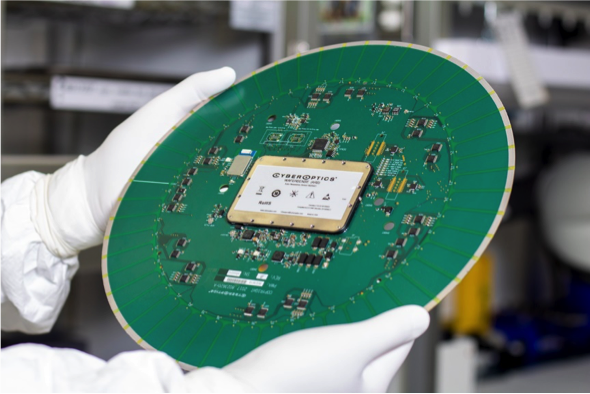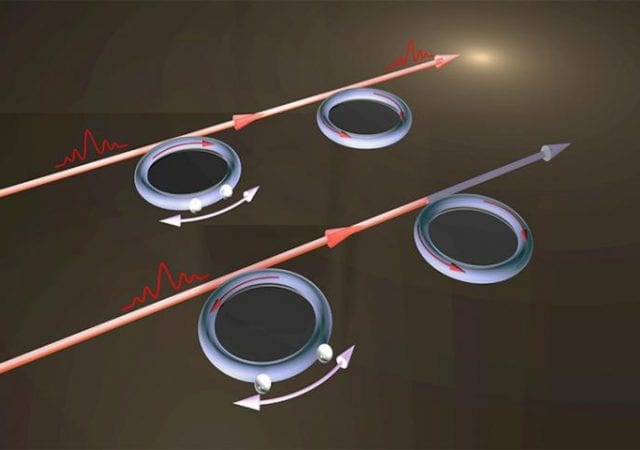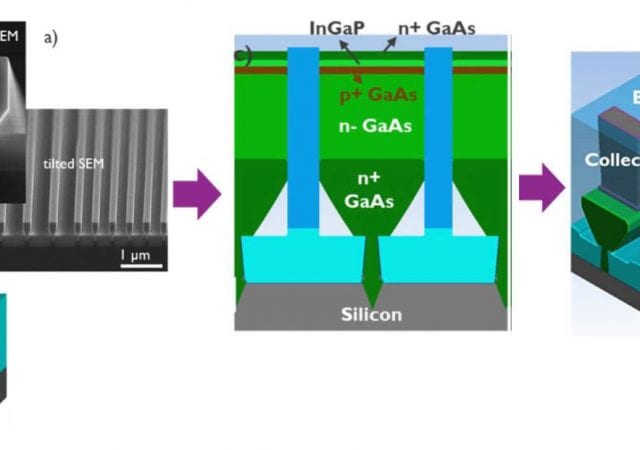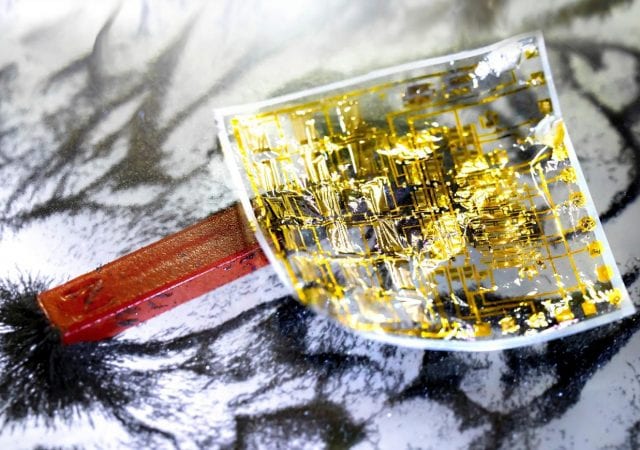Researchers from Dresden and Osaka present the first fully integrated flexible electronics made of magnetic sensors and organic circuits which opens the path towards the development of electronic skin.
MEMS
Designer-Defect Clamping of Ferroelectric Domain Walls for More-Stable Nanoelectronics
A UNSW study published today in Nature Communications presents an exciting step towards domain-wall nanoelectronics: a novel form of future electronics based on nano-scale conduction paths, and which could allow for extremely dense memory storage. FLEET researchers at the UNSW School of Materials Science and Engineering have made an important step in solving the technology’s primary long-standing challenge of information stability.
Colloidal Quantum Dot Photodetectors Can Now See Further Than Before
Optical sensing in the mid to long infrared (5microns – um) is becoming of utmost importance in different fields since it is proving to be an excellent tool for environmental monitoring, gas sensing, thermal imaging as well as food quality control or the pharmaceutical industry, to name a few. The amount of information hidden within this very rich spectral window opens new possibilities for multi or even hyperspectral imaging. Even though there are technologies that can address these challenges, they are very complex and expensive.
How Sensitive Can a Quantum Detector Be?
Quantum physics is moving out of the laboratory and into our everyday lives. Despite the big headline results about quantum computers solving problems impossible for classical computers, technical challenges are standing in the way of getting quantum physics into the real world. New research published in Nature Communications from teams at Aalto University and Lund University hopes to provide an important tool in this quest.

CyberOptics Unveils WaferSense Auto Resistance Sensor (ARS) at SEMICON Korea
CyberOptics® Corporation (NASDAQ: CYBE), a leading global developer and manufacturer of high-precision 3D sensing technology solutions, will exhibit at SEMICON Korea from February 5-7th, 2020 at the COEX in Seoul, booth #C236. During the show, the company will unveil and demonstrate its new WaferSense® Auto Resistance Sensor™ (ARS) with CyberSpectrum™ software for semiconductor tool set-up and diagnostics.

Tuning Optical Resonators Gives Researchers Control Over Transparency
Researchers at the McKelvey School of Engineering at Washington University in St. Louis have devised a fully contained optical resonator system that can be used to turn transparency on and off, allowing for a measure of control that has implications across a wide variety of applications.
SmartSens Wins Semiconductor Solution of the Year Designation in 2020 IoT Breakthrough Awards Program
SmartSens, the leading supplier of high-performance CMOS imaging systems, today announced that its SmartSens SC132GS product has been selected as the winner of the “IoT Semiconductor Solution of the Year” award in the 4th annual IoT Breakthrough Awards program from IoT Breakthrough, a leading market intelligence organization that recognizes the top companies, technologies and products in the global Internet-of-Things (IoT) market today. As 5G and AI-enabled applications accelerate toward industry-wide ‘intelligent’ system upgrades, SmartSens’ global shutter image sensor SC132GS is built specifically to power these applications.

Imec Demonstrates Scalable III-V and III-N Devices on Si Targeting beyond 5G RF Front-End Modules
Imec, a world-leading research and innovation hub in nanoelectronics and digital technologies, presents the first functional GaAs-based heterojunction bipolar transistor (HBT) devices on 300mm Si, and CMOS-compatible GaN-based devices on 200mm Si for mm-wave applications.
Growing Strained Crystals Could Improve Performance of Perovskite Electronics
A new method could enable researchers to fabricate more efficient and longer lasting perovskite solar cells, LEDs and photodetectors. By growing thin perovskite films on substrates with different compositions, engineers at the University of California San Diego have invented a way of fabricating perovskite single crystals with precisely deformed, or strained, structures. Engineering a small amount of strain in perovskites is of great interest because it provides a way to make significant changes in the material’s properties, such as how it conducts electricity, absorbs and transmits light, or how stable it is.
MolecuLED Organic Color Conversion Technology Set to Revolutionize Large Screen TV and Horticulture Industries
StoreDot, a pioneer of ultra-fast charging (UFC) technology for electric vehicles, today announces the formation of a new, independent company to drive development of its unique MolecuLED wavelength conversion technology. The new business, named MolecuLED, will focus on the continued development of the technology in the TV and large display screen market, while exploring opportunities for transformative applications in industries such as horticulture and healthcare.
